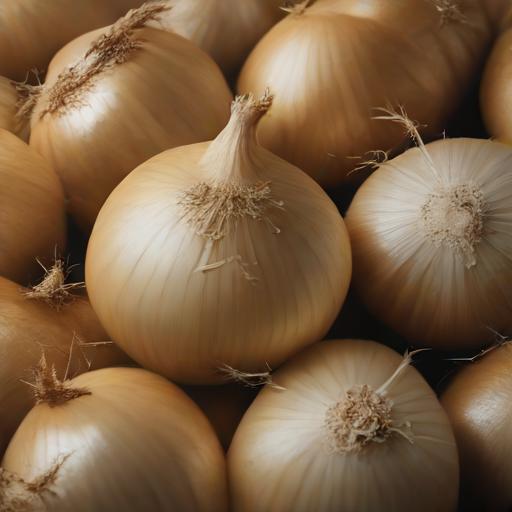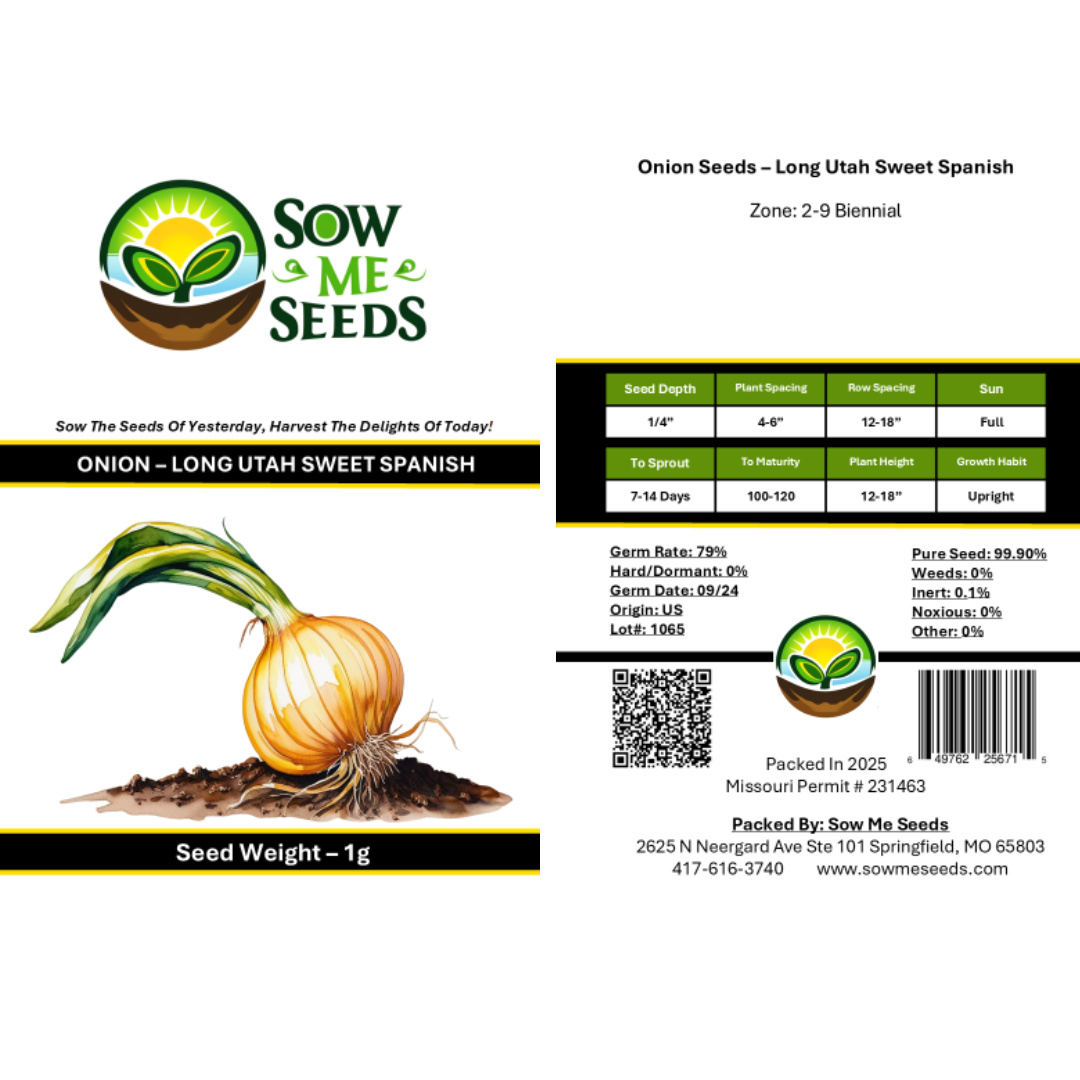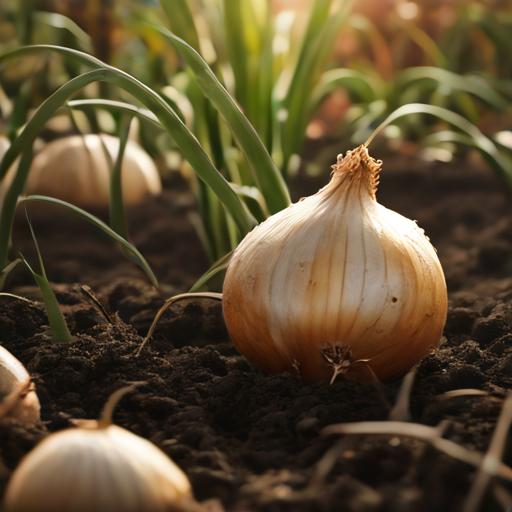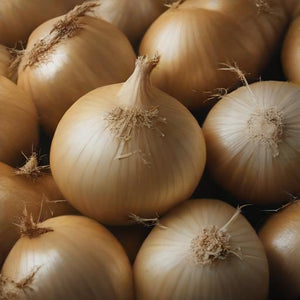- Hardiness Zone: 2-9 Biennial Typically Grown As An Annual
Seed Depth: 1/4 inch
Seed Spacing: 4–6 inches
Row Spacing: 12–18 inches
Sunlight: Full sun
Days to Sprout: 7–14 days
Days to Maturity: 100–120 days
Growth Habit: Upright, bulb-forming biennial
Sunlight: Requires full sun, with at least 6–8 hours of direct sunlight daily for optimal growth.
Soil Type: Prefers loose, well-drained soil with a pH of 6.0–7.0. Enrich with compost or organic matter before planting.
When to Plant: Start seeds indoors 8–10 weeks before the last frost, or sow directly outdoors in early spring once the soil is workable.
Direct Sowing: Plant seeds 1/4 inch deep, spacing them 4–6 inches apart in rows 12–18 inches apart. Thin seedlings as needed for proper spacing.
Indoor Sowing: Start seeds in trays or pots and transplant when seedlings are 4–6 inches tall and outdoor temperatures are consistently above 50°F.
Succession Planting: Not typically needed; onions are a single-season crop.
Watering: Water deeply and consistently, keeping the soil evenly moist but not soggy. Reduce watering as bulbs mature to prevent rot.
Fertilizing: Apply a nitrogen-rich fertilizer during early growth, then switch to a phosphorus- and potassium-rich fertilizer as bulbs develop.
Pruning: No pruning is needed, but regular weeding helps reduce competition for nutrients.
Pest and Disease Control: Monitor for onion maggots, thrips, and fungal diseases. Use row covers and crop rotation to minimize pest risks.
When to Harvest: Harvest bulbs when tops begin to yellow and fall over, typically 100–120 days after planting.
How to Harvest: Gently loosen the soil around the bulbs and pull them out carefully. Allow bulbs to cure in a dry, shaded area for 2–3 weeks.
Seed Collection: Allow plants to bolt in their second year for seed production. Collect seeds once flower heads dry.
Storing Seeds: Store seeds in an airtight container in a cool, dry place.
Why You’ll Love It
Mild and Sweet: Less pungent than standard onions — great for fresh eating, sandwiches, and salsas.
Big Bulbs: Produces large, globe-shaped onions with golden skin and firm white interiors.
Long-Day Variety: Best suited for northern growers with long summer days.
Great Storage: Cures well and keeps for months when dried and stored properly.
Plant Characteristics
Height: 12–18 inches
Growth Habit: Upright greens with deep, rounded bulb formation
Bulb Type: Large globe-shaped bulbs with golden yellow skin and white flesh
Days to Maturity: 110–120 days
Hardiness: Biennial grown as an annual
Flavor and Culinary Uses
Flavor: Mild, sweet, and crisp — perfect for raw use or caramelizing
Culinary Uses: Excellent for slicing, grilling, sautéing, onion rings, sandwiches, and soups
Companion Planting Tips
Good Companions: Beets, carrots, lettuce, and tomatoes
Avoid Planting Near: Peas and beans, which may compete for nutrients
Bonus Benefit: The scent of onions can help repel pests and protect neighboring crops
Common Issues and Solutions
Small Bulbs: Requires full sun and loose soil — thin seedlings early to allow space for bulb development
Downy Mildew: Provide good airflow and avoid overhead watering
Bolting: Plant early and maintain even moisture to prevent premature flowering
Seeds Per Packet
| 1g | Approximately 250 |
| 3g | Approximately 750 |
Why You’ll Love It
Mild and Sweet: Less pungent than standard onions — great for fresh eating, sandwiches, and salsas.
Big Bulbs: Produces large, globe-shaped onions with golden skin and firm white interiors.
Long-Day Variety: Best suited for northern growers with long summer days.
Great Storage: Cures well and keeps for months when dried and stored properly.
Plant Characteristics
Height: 12–18 inches
Growth Habit: Upright greens with deep, rounded bulb formation
Bulb Type: Large globe-shaped bulbs with golden yellow skin and white flesh
Days to Maturity: 110–120 days
Hardiness: Biennial grown as an annual
Flavor and Culinary Uses
Flavor: Mild, sweet, and crisp — perfect for raw use or caramelizing
Culinary Uses: Excellent for slicing, grilling, sautéing, onion rings, sandwiches, and soups
Companion Planting Tips
Good Companions: Beets, carrots, lettuce, and tomatoes
Avoid Planting Near: Peas and beans, which may compete for nutrients
Bonus Benefit: The scent of onions can help repel pests and protect neighboring crops
Common Issues and Solutions
Small Bulbs: Requires full sun and loose soil — thin seedlings early to allow space for bulb development
Downy Mildew: Provide good airflow and avoid overhead watering
Bolting: Plant early and maintain even moisture to prevent premature flowering
Seeds Per Packet
| 1g | Approximately 250 |
| 3g | Approximately 750 |





Share and get 15% off!
Simply share this product on one of the following social networks and you will unlock 15% off!